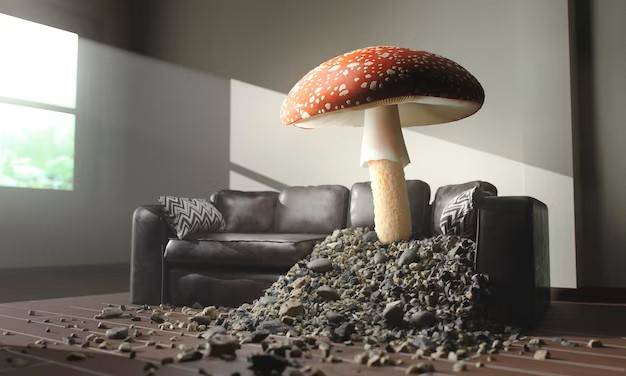Table of Contents
ToggleIntroduction:
Psychedelic mushrooms, colloquially known as “shrooms,” have intrigued humanity for centuries due to their profound mind-altering properties. An essential aspect of shroom consumption is comprehending the duration of their effects, which can vary widely depending on various factors. In this comprehensive exploration, we delve into how long do shrooms last into the intricacies, offering detailed insights into their onset, peak, plateau, offset, and the multitude of factors influencing their duration.
What Are Psychedelic Mushrooms?
Psychedelic mushrooms belong to a diverse group of fungi containing psychoactive compounds such as psilocybin and psilocin. These compounds interact with serotonin receptors in the brain, leading to alterations in perception, mood, and cognition.
Duration of Effects: Onset
The onset of shroom effects typically occurs within 20 to 60 minutes after ingestion. However, individual variability and factors such as stomach contents and metabolism can influence the precise timing of onset.
Duration of Effects: Peak
Following the onset phase, users experience the peak effects of shrooms, characterized by intense sensory perceptions, distorted time perception, and profound alterations in consciousness. The peak typically manifests around 1 to 2 hours after ingestion, though this can vary depending on dosage and individual physiology.
Duration of Effects: Plateau
After reaching the peak, users enter a plateau phase where the effects stabilize and persist at a relatively consistent intensity. This plateau phase can last for approximately 2 to 4 hours, during which users continue to experience altered perceptions and heightened introspection.
Duration of Effects: Offset
As the effects of shrooms begin to wane, users enter the offset phase, marked by a gradual return to baseline consciousness. The offset phase typically lasts around 1 to 2 hours, during which residual effects may linger before dissipating entirely.
Factors Influencing Duration
A multitude of factors can influence the duration of shroom effects, including dosage, individual tolerance, set and setting, route of administration, and the specific species or strain of mushrooms consumed. Understanding these factors is crucial for predicting and managing the duration of a shroom experience.
Dosage Considerations
Dosage plays a pivotal role in determining the duration and intensity of shroom effects. Higher doses tend to result in longer-lasting and more profound experiences, while lower doses may produce shorter durations of effects with milder perceptual alterations.
Individual Tolerance
Individual tolerance to psychedelics can significantly impact the duration of shroom experiences. Regular users may develop tolerance to the effects of psilocybin, requiring higher doses to achieve similar outcomes and potentially prolonging the duration of the experience.
Set and Setting
The psychological state of the user and the environmental setting in which shrooms are consumed can profoundly influence the duration of effects. A supportive and comfortable setting can prolong the positive aspects of the experience, whereas stressful or chaotic environments may shorten its duration.
Species/Strain Variability
Different species and strains of psychedelic mushrooms contain varying concentrations of psychoactive compounds, leading to differences in the duration and intensity of effects. Understanding the potency and characteristics of the mushrooms being consumed is essential for predicting the duration of the experience accurately.
Benefits of Psychedelic Mushrooms
Psychedelic mushrooms have garnered increasing attention for their potential therapeutic benefits, including their efficacy in treating depression, anxiety, PTSD, and substance abuse disorders. Additionally, they have been shown to induce profound spiritual experiences, promote personal growth and insight, and enhance creativity and problem-solving abilities.
Cons of Psychedelic Mushrooms
Despite their therapeutic potential, shrooms carry inherent risks, including the potential for adverse psychological reactions such as anxiety, paranoia, and psychosis, particularly in individuals predisposed to mental health conditions. Moreover, their legal status in many jurisdictions poses legal risks for users.
Pros of Psychedelic Mushrooms
Advocates of psychedelic mushrooms argue for their potential to enhance creativity, facilitate empathetic experiences, and foster profound self-discovery and spiritual exploration. Furthermore, ongoing research suggests promising avenues for their therapeutic use under controlled settings, potentially revolutionizing mental healthcare.
Benefits and Cons of Psychedelic Mushrooms
| Benefits | Cons |
|---|---|
| Therapeutic potential for mental health | Risk of adverse psychological reactions |
| Spiritual exploration and personal growth | Legal implications and regulatory hurdles |
| Potential for enhancing creativity | Possibility of misuse and substance abuse |
| Facilitation of empathetic experiences | Lack of standardized dosing and purity |
| Promotes novel perspectives and insights | Potential for exacerbating preexisting |
| mental health conditions |
Conclusion
Understanding the duration of shroom effects is paramount for safe and informed use. By delving into the intricacies of onset, peak, plateau, and offset phases, individuals can better anticipate and navigate their shroom experiences. Moreover, recognizing the multitude of factors influencing duration, from dosage and tolerance to set and setting, empowers users to maximize the benefits and minimize the risks associated with psychedelic mushroom consumption. As research into the therapeutic potential of shrooms continues to evolve, responsible usage practices and ongoing education are essential for harnessing their transformative power effectively.

